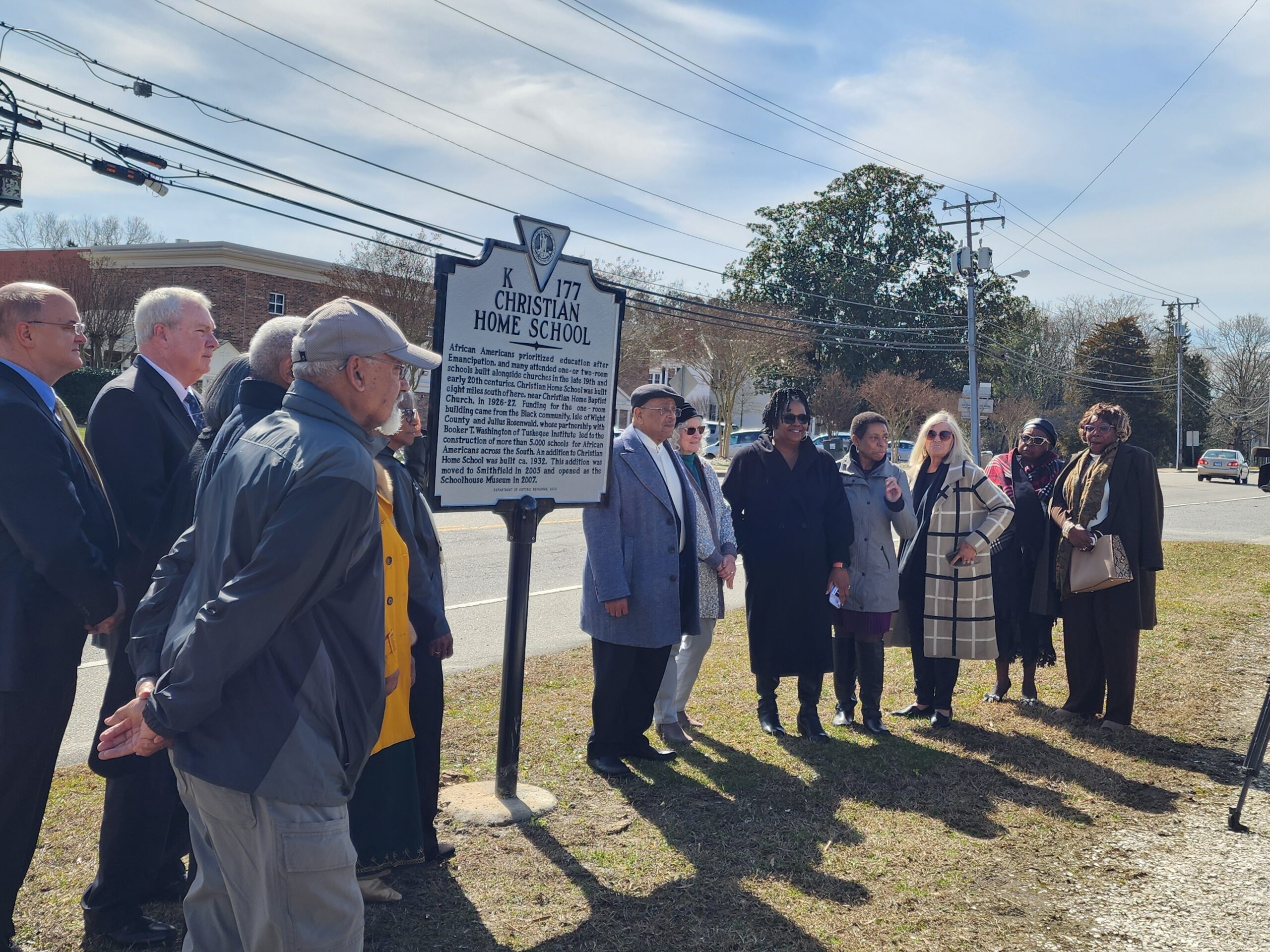
Department of Historic ResourcesAn official website of the Commonwealth of Virginia Here's how you knowAn official websiteHere's how you know

Department of Historic ResourcesAn official website of the Commonwealth of Virginia Here's how you knowAn official websiteHere's how you know

Virginia Department of Historic Resources
(dhr.virginia.gov)
For Immediate Release
February 22, 2024
Contact:
Ivy Tan
Department of Historic Resources
Marketing & Communications Manager
ivy.tan@dhr.virginia.gov
804-482-6445
—The marker focuses on a 1920s one-room schoolhouse constructed for Black children during the segregation period of Virginia’s public education system—
—Text of marker reproduced below—
PLEASE NOTE: DHR creates markers not to “honor” their subjects but rather to educate and inform the public about a person, place, or event of regional, state, or national importance. In this regard, erected markers are not memorials.
RICHMOND – A state historical marker issued by the Virginia Department of Historic Resources (DHR) was dedicated this weekend for the Christian Home School, a school in Isle of Wight County that provided education to Black children during the Jim Crow era of segregation in Virginia’s public schools.
The dedication ceremony for the marker was held Sunday, February 25, starting at noon, at the marker’s location at the Schoolhouse Museum, located on 516 Main Street in Smithfield (23430). This event was free and open to the public. Free roadside parking was available for attendees.
The Vice-Mayor of the Town of Smithfield Valerie Butler served as the celebration leader of the dedication ceremony. The ceremony began with an invocation led by the Rev. James M. Harrison, a member emeritus of the Schoolhouse Museum. Steve Bowman, Mayor of the Town of Smithfield, delivered the welcoming remarks. Jessie Linyear, President of the Schoolhouse Museum’s Board of Directors, and DHR Director Julie Langan also spoke at the dedication ceremony. Members of the Schoolhouse Museum Steering Committee unveiled the historical marker. Refreshments and snacks were served. A tour of the Schoolhouse Museum took place after the marker dedication and unveiling.
After Emancipation and the end of the Civil War (1861-1865), African Americans prioritized the pursuit of education. Many Black children attended one- or two-room schools built alongside churches in the late 19th and early 20th centuries. The Christian Home School, built in 1926-27 near Christian Home Baptist Church, was located eight miles south of the present-day site of the Schoolhouse Museum. Funding for the one-room building came from the Black community, Isle of Wight County, and Sears, Roebuck and Company president Julius Rosenwald, whose partnership with Booker T. Washington of Tuskegee Institute led to the construction of more than 5,000 schools for African Americans across the South. An addition to the Christian Home School building was erected ca. 1932. This addition was moved to its current location in Smithfield in 2005. In 2007 the addition opened as the Schoolhouse Museum.
The Virginia Board of Historic Resources, which is authorized to designate new state historical markers, approved the manufacture and installation of the Christian Home School marker in 2022. The marker’s manufacturing costs were covered by its sponsor, the Schoolhouse Museum.
Virginia’s historical highway marker program began in 1927 with installation of the first markers along U.S. Route 1. It is considered the oldest such program in the nation. Currently there are more than 2,600 state markers, mostly maintained by the Virginia Department of Transportation, except in those localities outside of VDOT’s authority.
Full Text of Marker:
Christian Home School
African Americans prioritized education after Emancipation, and many attended one- or two-room schools built alongside churches in the late 19th and early 20th centuries. Christian Home School was built eight miles south of here, near Christian Home Baptist Church, in 1926-27. Funding for the one-room building came from the Black community, Isle of Wight County, and Julius Rosenwald, whose partnership with Booker T. Washington of Tuskegee Institute led to the construction of more than 5,000 schools for African Americans across the South. An addition to Christian Home School was built ca. 1932. This addition was moved to Smithfield in 2005 and opened as the Schoolhouse Museum in 2007.
###
Programs
DHR has stimulated more than $4.2 billion dollars in private investments related to historic tax credit incentives, revitalizing communities of all sizes throughout Virginia
DHR has secured permanent legal protection for over 700 historic places - including 15,000 acres of battlefield lands
DHR has erected 2,532 highway markers in every county and city across Virginia
DHR has registered more than 3,317 individual resources and 613 historic districts
DHR has engaged over 450 students in 3 highway marker contests
DHR has stimulated more than $4.2 billion dollars in private investments related to historic tax credit incentives, revitalizing communities of all sizes throughout Virginia
DHR has secured permanent legal protection for over 700 historic places - including 15,000 acres of battlefield lands
DHR has erected 2,532 highway markers in every county and city across Virginia
DHR has registered more than 3,317 individual resources and 613 historic districts
DHR has engaged over 450 students in 3 highway marker contests
DHR has stimulated more than $4.2 billion dollars in private investments related to historic tax credit incentives, revitalizing communities of all sizes throughout Virginia